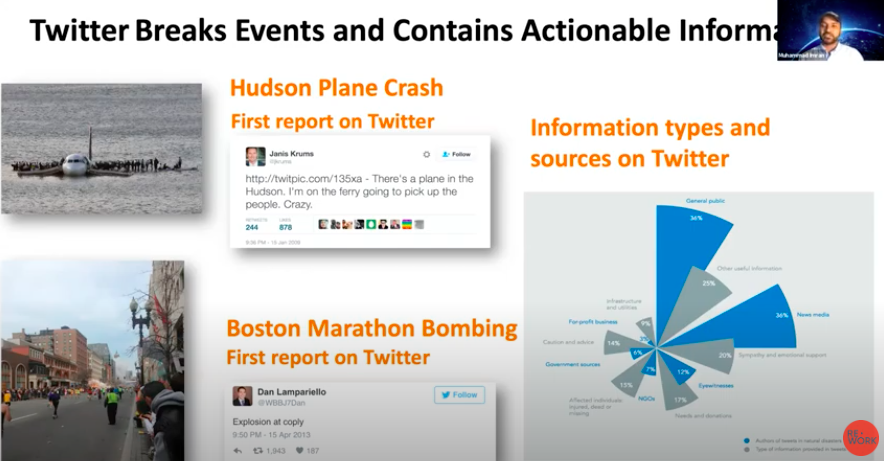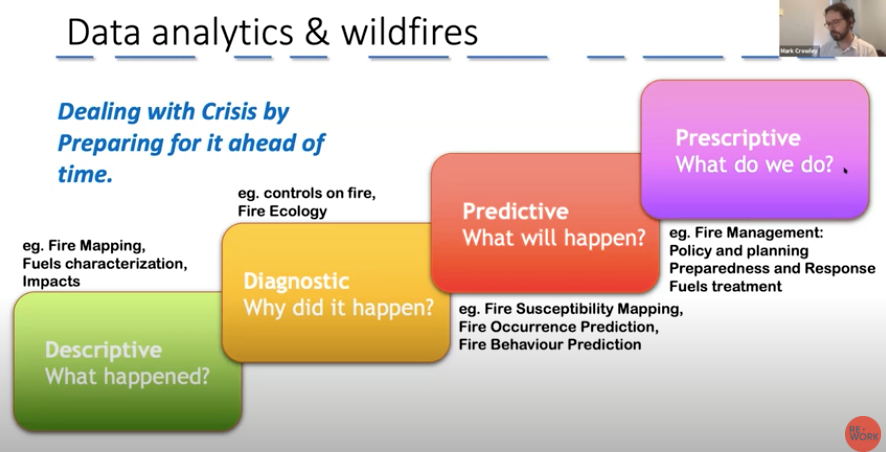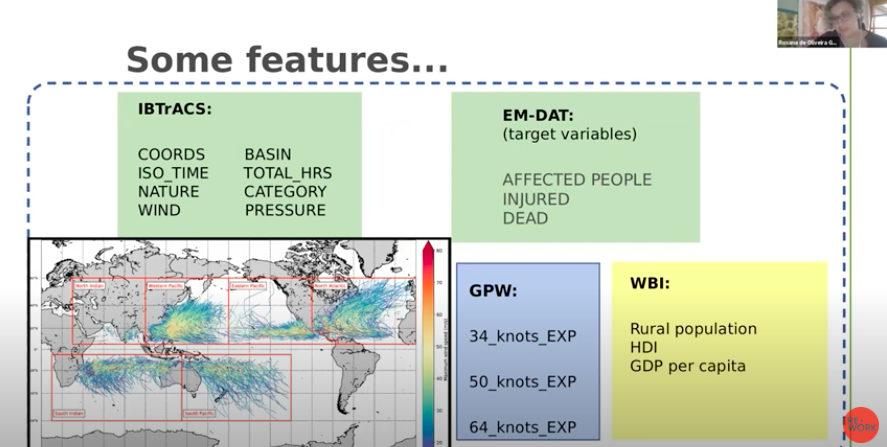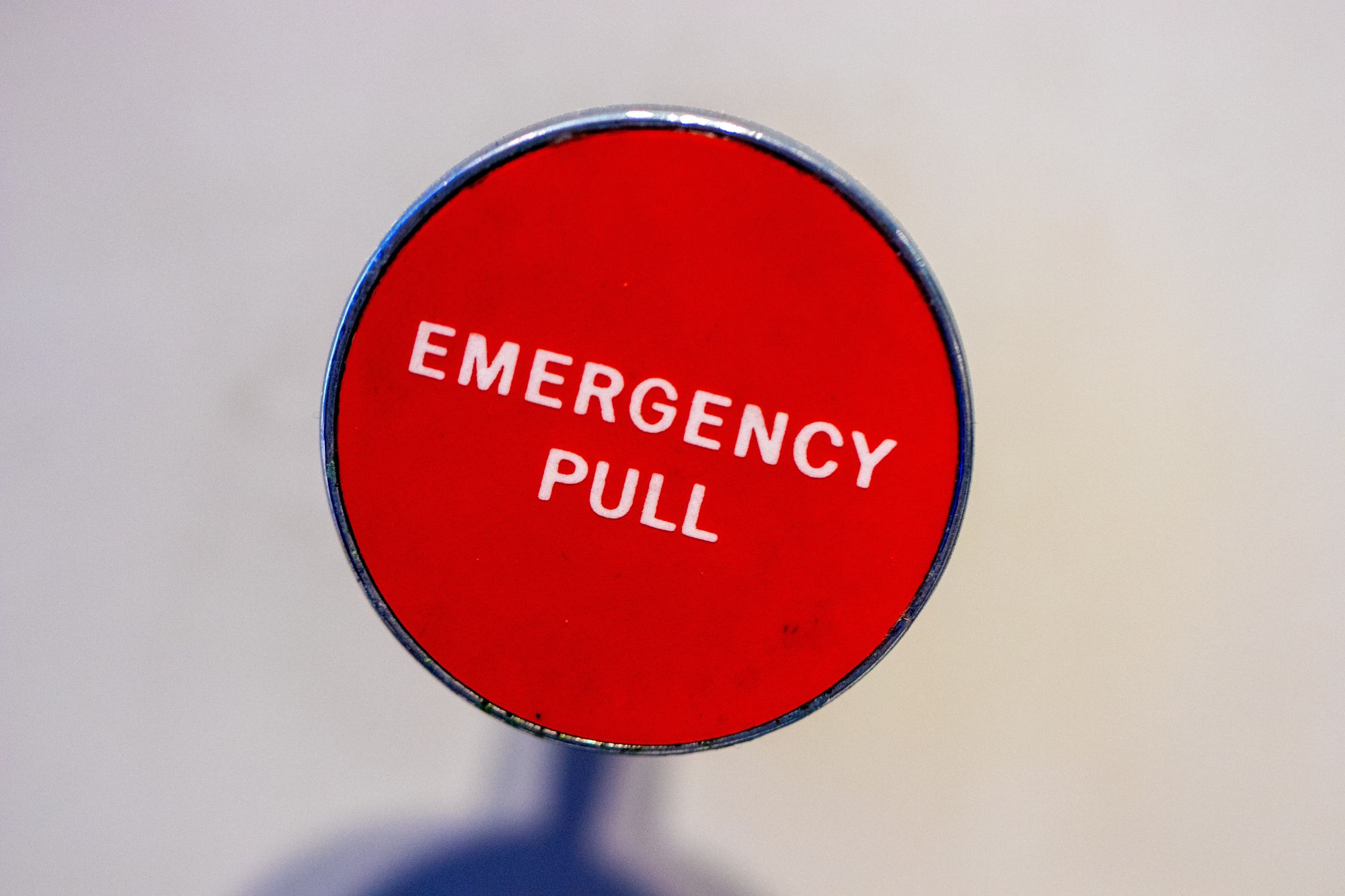AI has been touted to be the future in a wide variety of settings and industries, but until recently, the voice of those working in the application of AI to crisis issues has been overshadowed by those pioneering the likes of autonomous vehicles and robotics.
We had the pleasure of hearing the latest research and application of AI from three expert speakers at the AI for Crisis Prediction & Management webinar: Muhammad Imran, Research Scientist at the Crisis Computing Team, Qatar Computing Research Institute, Mark Crowley, Assistant Professor at the University of Waterloo and Rosana de Oliveira Gomes, Lead Machine Learning Engineer at Omdena.
Below we have included some of our favourite quotes from each speaker, the video presentation and a TL;DR of key points:
TL;DR:
- It is possible to use and analyse Twitter data in crisis, extracting critical information to provide to humanitarian organisations in real-time
- Damages caused by natural disasters can be assessed via an image on social media - deep learning models based on transfer learning approach are used to determine severity of damage
- The use of ML models for natural disaster will never be truly autonomous, but instead have a human touch to ensure public trust and guidance. this is mainly due to catastrophic circumstances when errors are present
- When applying AI models to crisis prediction, you will find a lot of fake information coming out of bots online. You then have to try to reduce the information from millions to hundreds of sources
Muhammad Imran - Highlights
Muhammad Imran works as a Scientist and Lead of the Crisis Computing team at Qatar Computing Research Institute. His interdisciplinary research focuses on natural language processing, crisis informatics, social computing, and applied machine learning. He analyses social media communications during time-critical situations such as natural disasters using big data analysis techniques such as data mining, machine learning, and deep neural networks. Dr. Imran received his PhD in computer science from the University of Trento in 2013. Some of the key points discussed by Muhammad's:
"Unfortunately, when information on natural disasters is most needed, it is often scarce. This information gap can cause delayed decision making, actions and an increase in high community harm. It is our aim to reduce this gap and aid in humanitarian support"
"We have undertaken work which shows that each passing minute and hour reduces information value. After 48 hours we saw a big drop in the information value, seeing a decrease of up to 30%. This is where we rely on social media as the access time to information from the disaster is minimised, getting real-time updates seconds after an incident."

"Social media sources come with several challenges. We often focus on volume and velocity. There are millions of messages in a few days and the velocity of these is extremely quick. We therefore rely on ML methods to find the needle in the haystack to find the useful data"
Mark Crowley - Highlights
Mark Crowley is an Assistant Professor in the Department of Electrical and Computer Engineering and the Waterloo Artificial Intelligence Institute at the University of Waterloo. He did a postdoc at Oregon State University with Tom Dietterich's ML group researching computational sustainability problems and received his PhD from the University of British Columbia in 2011.
"There is a rising cost of getting in wrong on forest fires. Just in the last couple of years it has exploded to a level where everyone has heard about it. Current simulation methods have high precision but often underestimate the scale and risk of the fires as well as being computationally expensive to run many times (manual modelling)"
"One pattern we have seen is that the application of many ML methods applied are out of date. It's very hard for somebody to use the latest deep learning methods, trying to get people in domains connected with the researchers is also a problem we have found. Teams have to work together"

"Machine Learning is of use here for prediction, planning and logistics to reduce the frequency and size of fires. It can also help adapt to the increasingly challenging conditions put forward by climate change which are not going away"
"You're always going to have to have a human in the loop with important human life and disaster matters - a human always has to give input and give a final decision. You can’t build them or apply them without people"
Rosanna Gomes - Highlights
Rosana is a PhD in Astrophysicist, with 10 years background in academic research. Currently she is transitioning careers into Data Science and Artificial Intelligence for social good. In the Omdena community, Rosana has participated on AI challenges, implementing data-driven solutions to real world problems. In particular, she was one of the managers in the Omdena project presented in this webinar, in which a team of 35 persons built an application for cyclone response, identifying what items need to be supplied when a disaster takes place.
"(We aim to) estimate the total amount of people affected when a cyclone happens, to determine the best relief package. This is done through the use of several ML models. Alongside this, we are using world health organisation guidelines for nutrition and non food items, calculating the number of calories needed per day, number of households and number of dead"

"Experienced limitations include the amount of open source data available, manual data collection and dealing with significant outliers. Improvements of the model could, however lead to automated inclusion of future cyclones in online models and additional features for populations at risk of cyclones including elevation and floods"
"Missing data is problematic for us. When calculating the affected population and injured people, we sometimes get gaps in data - one solution was to look online on Wikipedia (ensuring that the information on there is reliable)"
Interested in finding out more about how AI can be applied to crisis prediction and management? You can watch the webinar in full again here.
Future webinars can be found and registered for here.
Interested in reading more leading AI content from RE•WORK and our community of AI experts? See our most-read blogs below:
Top AI Resources - Directory for Remote Learning
10 Must-Read AI Books in 2020
13 ‘Must-Read’ Papers from AI Experts
Top AI & Data Science Podcasts
30 Influential Women Advancing AI in 2019
‘Must-Read’ AI Papers Suggested by Experts - Pt 2
30 Influential AI Presentations from 2019
AI Across the World: Top 10 Cities in AI 2020
Female Pioneers in Computer Science You May Not Know
10 Must-Read AI Books in 2020 - Part 2
Top Women in AI 2020 - Texas Edition
2020 University/College Rankings - Computer Science, Engineering & Technology
How Netflix uses AI to Predict Your Next Series Binge - 2020
Top 5 Technical AI Presentation Videos from January 2020
20 Free AI Courses & eBooks
5 Applications of GANs - Video Presentations You Need To See
250+ Directory of Influential Women Advancing AI in 2020
The Isolation Insight - Top 50 AI Articles, Papers & Videos from Q1
Reinforcement Learning 101 - Experts Explain
The 5 Most in Demand Programming Languages in 2020
